Bali

And now, at last, we come to Bali. Bali is finally a place that I had heard of. However, having heard of Bali is a far cry from knowing anything about it. I think we have all heard the name Bali, as a famous vacation spot. Speaking for myself, I always pictured Bali as an island somewhere out in the South Pacific, like Tahiti (Tahiti actually is an island somewhere out in the South Pacific). I never had any idea it was part of Indonesia.
Having only traveled thru the Lesser Sunda Islands so far, you have already seen that Bali is hardly the only Indonesian Island that is unique and beautiful. So, how come “everyone” has heard of Bali, but if you told someone you were taking a vacation to Lombok or Sumba they would just look at you funny?
There is a little bit of luck involved. In 1860, the famous Welsh naturalist Alfred Russel Wallace visited Bali. In addition to developing the Wallace Line, marking the rather abrupt boundary between Asian and Australonesian species, he wrote a glowing report about the Island of Bali.
In the 1930s, anthropologists Margaret Mead and other celebrities of the day made visits to Bali. Their accounts of the island and its peoples created a western image of Bali as “an enchanted land of aesthetes at peace with themselves and nature”.
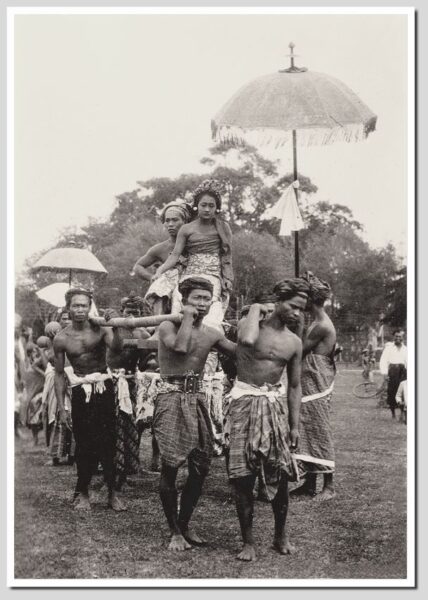
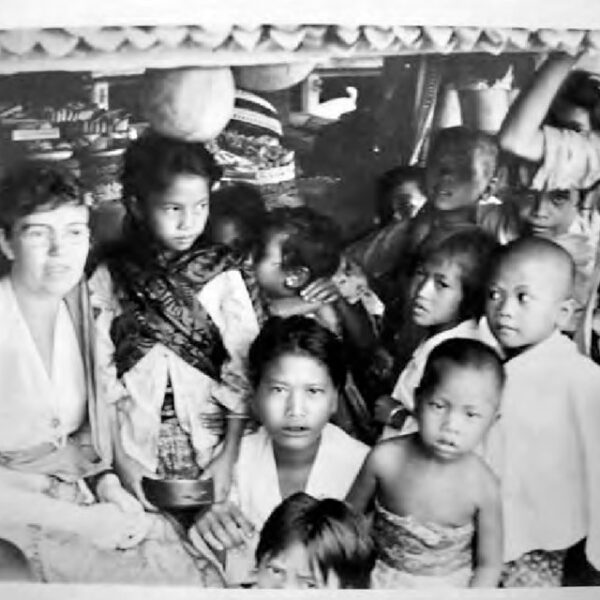
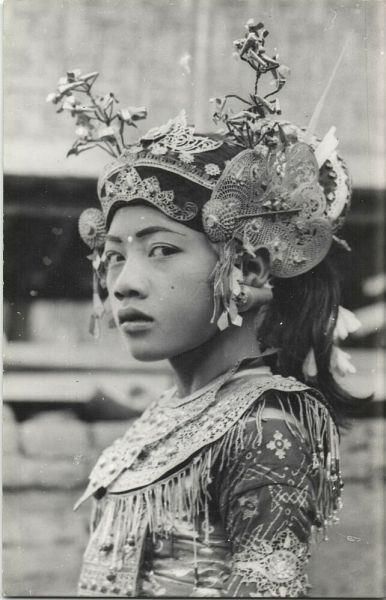
Then in 1932 a film called “Virgins of Bali” hit the cinemas. While it was illegal to show white women nude at that time, the restriction did not apply to women of colour. The movie making full use of that loophole was essentially legal pornography, consisting mainly of scenes of topless Balinese women. The reputation of Bali was made.
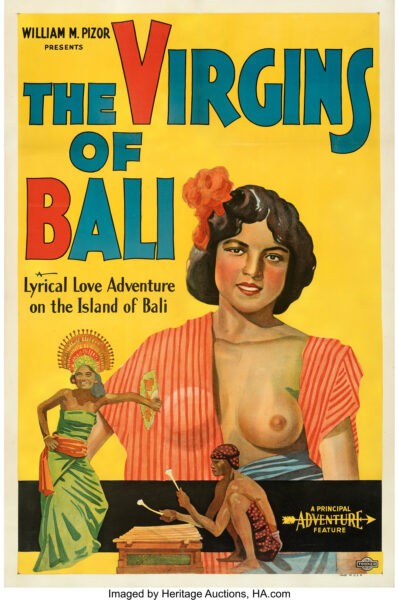
Natural beauty is a must, and Bali certainly has that. However, as we have seen, it has nothing on its neighbors. But Bali does have something they don’t. The Subak Irrigation system was developed in Bali during the 800s (that is right, 1,200 years ago) for the growing of rice. Not only is it an efficient way to move rice farming onto land that is not flat, the result is eyecatching. The rice paddies of Bali are as much of a scenic attraction as the natural features of the volcanic landscape.

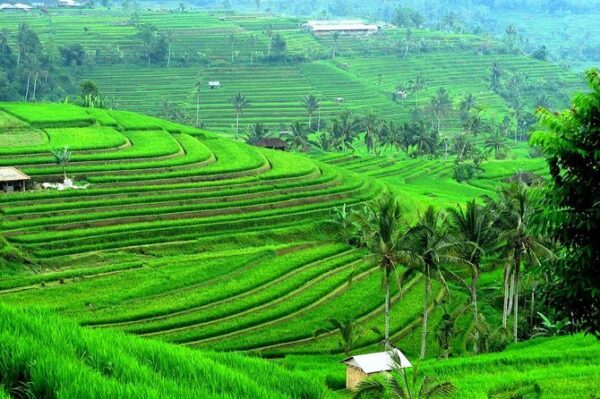
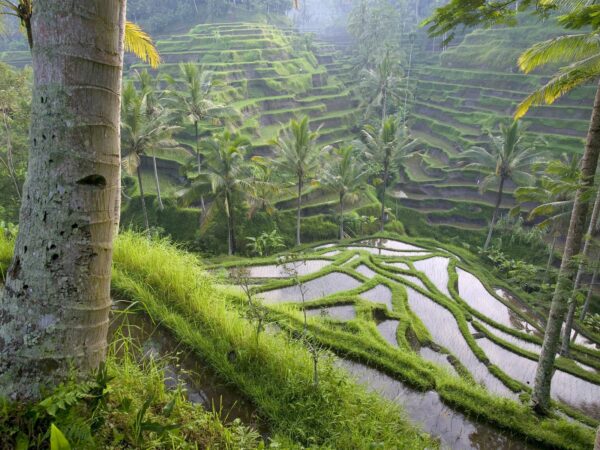
Luck will only take you so far, someone has to seize the opportunity, and in 1963 President Sukarno built the Bali Beach Hotel and began to promote tourism in Bali. Up until then there were only three tourist hotels on the island. After that the tourist industry took off. The opening of an international airport in 1970 only accelerated the process. Today tourism is over 80% of the island’s economy…. at a cost. Overexploitation has dried up half of the island’s rivers, and refuse is an ongoing challenge.
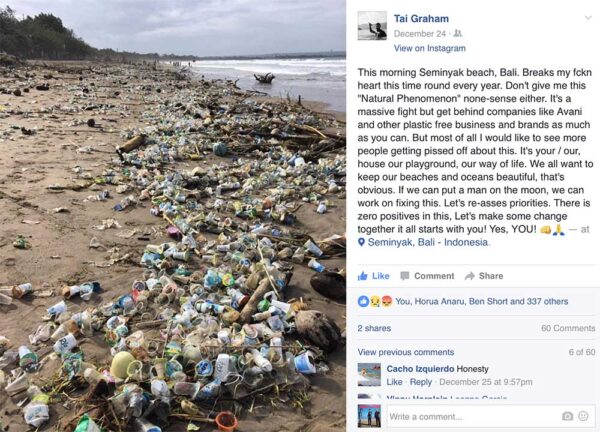
I mentioned Bali being the last majority Hindu Island in Indonesia. But Hinduism, as with all the other major religions in Indonesia has a decidedly Indonesian slant. This will be obvious when you sample the food in Bali, and the food in Bali is indeed worth sampling. In India, Hinduism goes hand in hand with rampant vegetarianism. In Bali, they like their meat. But, if you have been watching during your journey, every religion adapts to the place, and wherever one of the major modern religions has spread, it has syncretized much of the traditions of the religions that preceded it.
In regions one and two, you would have found traditional gods celebrated as saints and traditional rituals following the age old steps with Christianity tacked on. This might seem quaint to those of us accustomed to European Christian traditions… unless we consider how much of the European version was borrowed from Paganism… The Pagan festival of Eostre became Easter, and brought the Easter Bunny and decorated eggs with it. Christmas, the premier Christian festival, picked up Christmas trees, gift giving, holly, berries, mistletoe and ivy, wreaths, caroling, the yule log, and candles from Pagan traditions. Every religion is tailored to the traditions that came before it.
But, I digress (again). The islands were the realm of the local traditions and practices until the influence of India reached the islands in the early 100’s. Hinduism gradually spread over the entire region. Buddhism started in India during the 500’s and followed the Indian cultural influence into the islands. Both Hindu and Buddhist empires rose and fell on the islands. With the exception of Bali, neither is a majority religion any longer, but the influence of both still colours the traditions of the region.
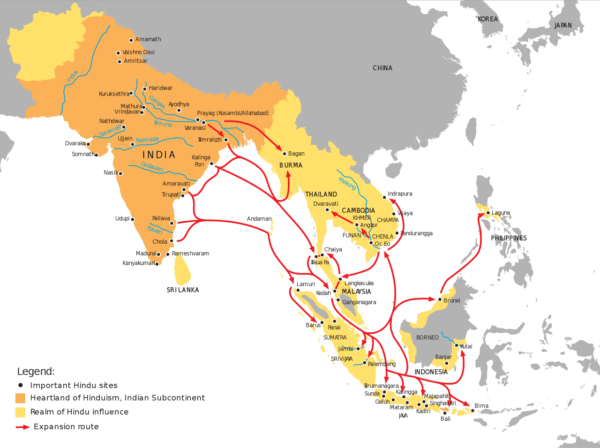
Islam arrived during the 700’s, brought by Sunni traders, and soon mixed with the existing beliefs to form a distinctly different form of Islam. The Portuguese brought Catholicism during the 1500’s, and the Dutch brought Protestantism (Calvinism) during the 1600’s.
Today, Indonesia officially allows for religious “freedom”. However, it only recognizes six religions: Islam, Protestantism, Catholicism, Hinduism, Buddhism, and Confucianism…. And you have to pick one. Atheism is not accepted. Freedom “of” religion exists, but not freedom “from” religion.
But now we get to the real reason to visit Bali… NO, not the bare breasted Balinese princesses. The 1930’s were a long time ago, and today’s Balinese are much more sophisticated than their ancestors. If you see topless princesses, they will probably be tourists at the beach. During the CRAW the most exciting thing about this island is going to be the Balinese food. Take an exotic island locale, mix in the influence of India, and turn it into a tourist destination, and what will you get? Food. Excellent food. Spicy food. Lots of food. Street food!
There are a lot of excellent restaurants in Bali. But eating at those would be a betrayal of the whole ethos of your circumpolar trip around the world. Street food fits the theme. It is real. It is spectacularly good…. and it is an adventure! Would any trip to Bali be complete, if you did not experience the world famous Bali Belly?
Just to make sure you miss nothing during your trip across Bali, here are things you must try from the many street food vendors you are going to visit.
You have to start with Babi Guling: Roast Suckling Pig is only second to rice as a staple Balinese food. The pig has to be cooked whole, because it is turned (Guling) on a spit over the fire. The young pig itself is juicy and delicious, but it is the spices stuffed into and rubbed all over it while it cooks that will make Babi Guling a treat you will never forget. Try it by itself first, because it will also be a part of many other Balinese dishes.
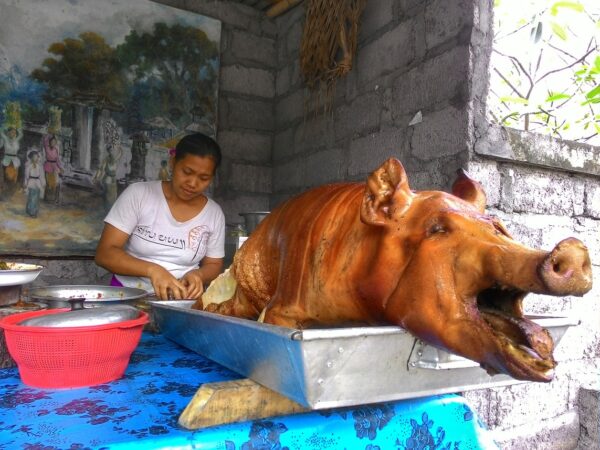
Satay Lilit: If you haven’t already figured it out, Satay, meat skewered on a stick (bamboo slivers) is a basic in Indonesia, and you can find it everywhere. And every island has its own special way of preparing it. On Bali the meat is not skewered, but wrapped (lilit) around the stick. Then it is marinated in coconut milk and a variety of spices. It is optional to have additional sauce to dip your Satay in, since it is already well spiced. The only reasonable thing to do is try it both ways.
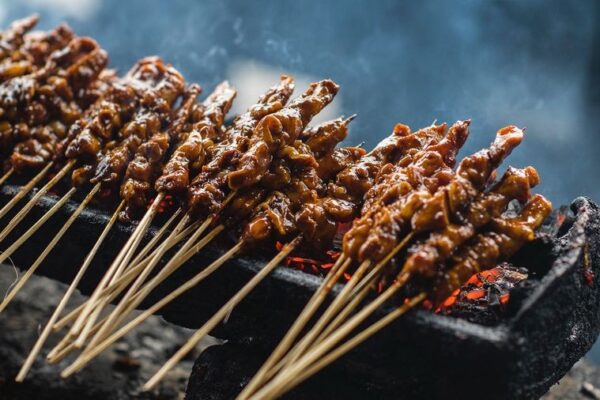
Ayam Betutu: A whole chicken or duck is stuffed with an intricate mixture of ingredients and spices, including (but not limited to) shallots, garlic, ginger, chili, peanuts, lime, shrimp paste, turmeric, coriander, galangal, lemongrass, gula melaka, pucuk ubi kayu, banana leaf…. Well, you get the idea. Then it takes 8 hours to cook, baking and steaming the flavor into every bite.
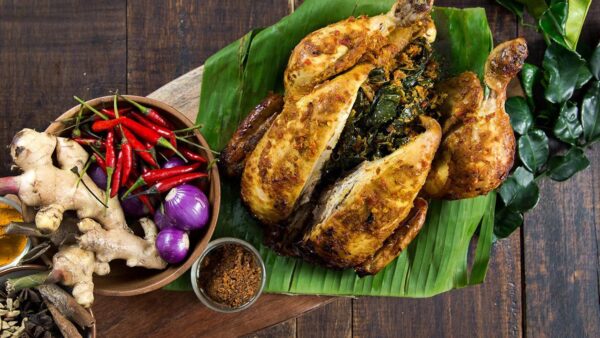
Lawar: Ground meat; chicken, duck, pork, beef, turtle, or a combination, mixed with green vegetables and grated coconut. It comes in red or white… the red comes from missing the Lawar with animal blood to give it a certain savory flavour. Surely you will have to try the Red lawar!
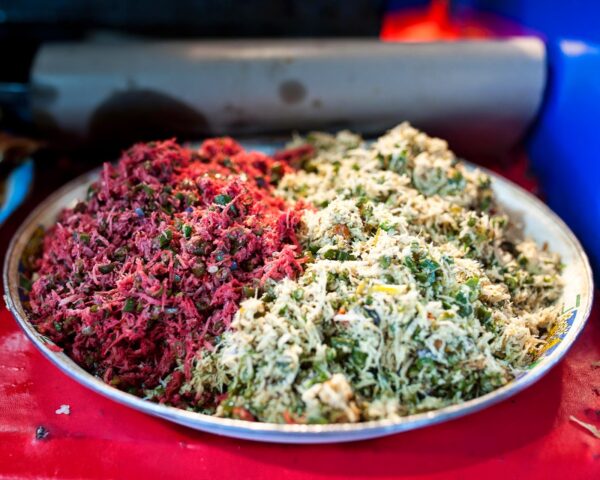
Bubur Mengguh: This is a sort of porridge, topped with a mixture of shredded chicken, peanuts, celery, and various spices. Bubur Mengguh is recommended for a light breakfast.
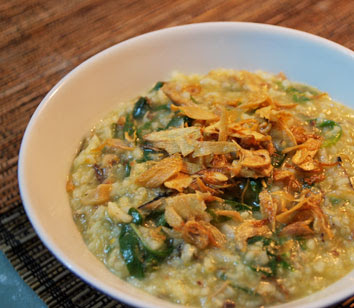
Nasi Jinggo: I don’t know if the comparison will resonate with anyone who has not eaten diner lunches in the US, but to me Nasi Jinggo fall somewhere between fast food and the US diner staple “meat and three.” It makes a nice, affordable small meal that you can grab on the go. Rice, vegetables, and meat, egg, or noodles all wrapped in a banana leaf. While you can eat it Indonesian style, with your fingers, since Bali is a tourist island, your Nasi Jinggo will often come with a plastic spoon for tourists.
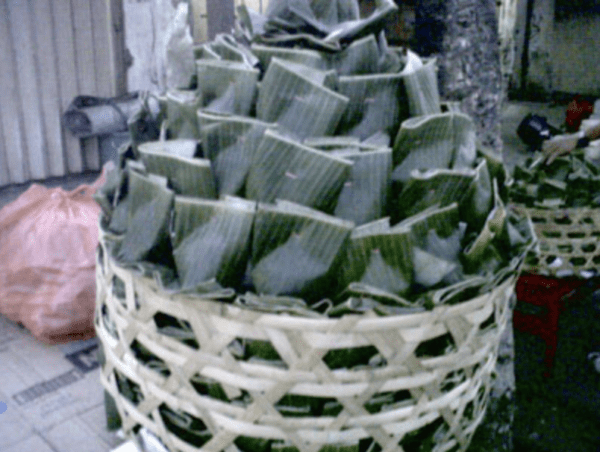
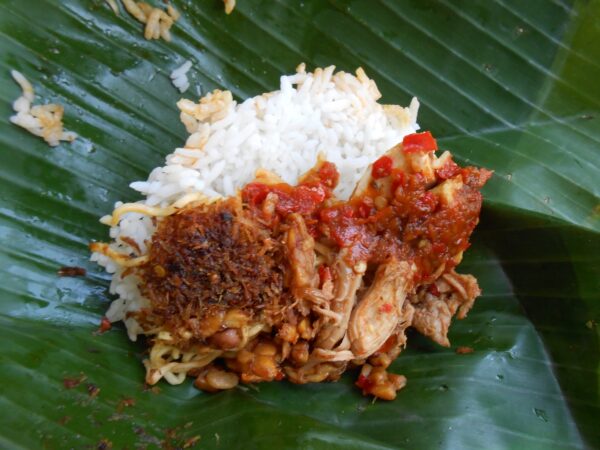
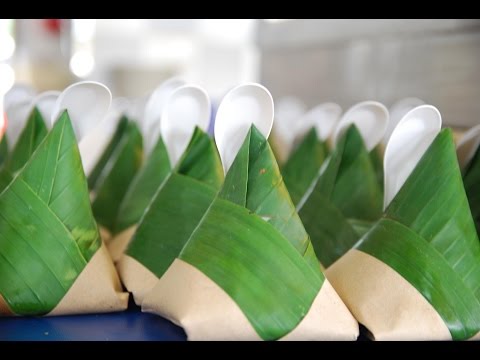
Nasi Tepeng: Nasi means rice in Indonesian, but this is a different sort of rice, with a texture somewhere between normal rice and porridge. Naturally it is well treated with herbs and spices, and juiced up with fried chicken, eggs, beans, and or jackfruit. In Indonesia this is considered a breakfast food… just so you know.
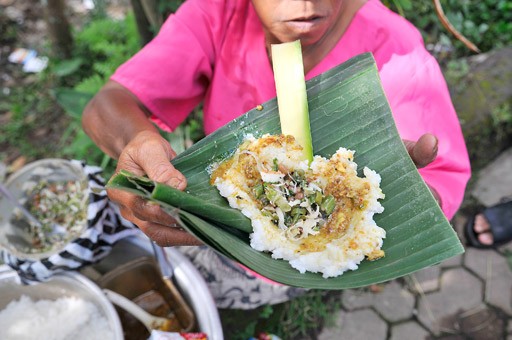
Urab: I don’t even know what to say about this…. except it is vegetarian. I guess that Urab is the Bali version of a green salad. It is a mixture of raw and steamed vegetables and contains no meat. Given the Balinese passion for spices, it is surely as good as a meal can be… if it has no meat!
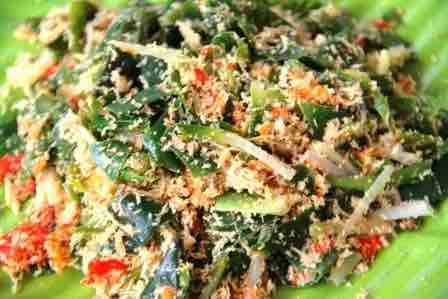
Bakso: The Indonesian meatball, made with a beef paste, is one of the most popular foods in Bali. You can get them from street vendors to the best restaurants, and you can eat them by themselves, or with rice or noodles. If you leave Bali without having eaten Bakso, you cannot really say you have been there. And if you don’t have the courage to purchase them from a street vendor, then what are you doing traveling around the world anyway?

Sambal Matah: This is not really a dish, in and of itself, but rather is the Bali version of salsa. It can have various ingredients, but you can count on tomatoes, shallots, and birds eye chilis (also commonly known as thai chilis). Birds eye chilis are 10-20 times as hot as jalapenos, so not too terribly hot, just enough to spice up any dish you choose during your Bali journey… apply the Sambal Matah liberally and enjoy!!
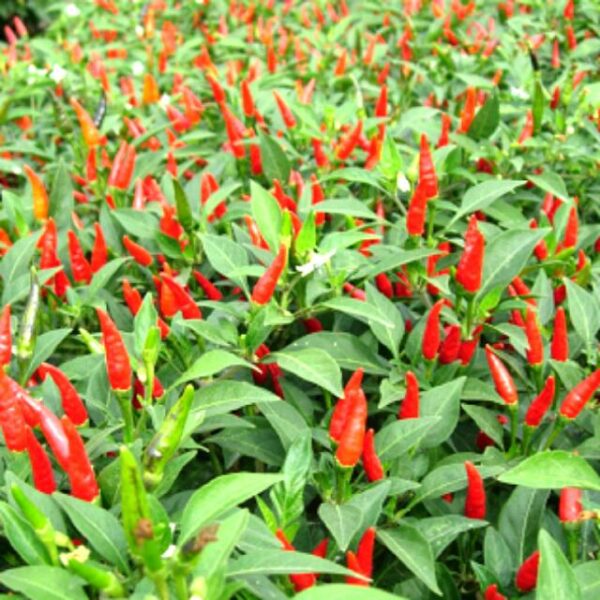
This is just a tiny sampling of the foods available in Bali. And every place you eat will have a slightly different version of these. The only thing that you will regret about your journey across Bali is that you only have one stomach.
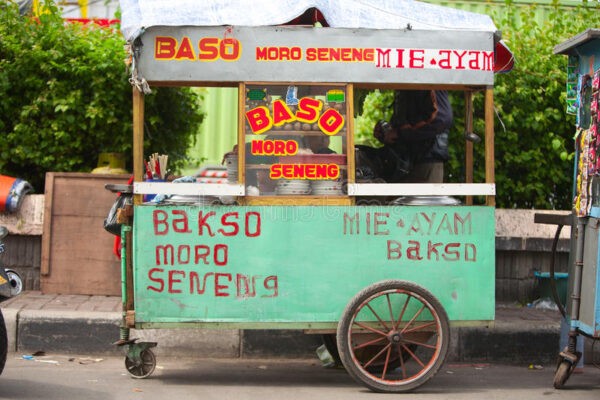
Your actual run, walk, or ride across Bali will be mundane in comparison to much of what you have covered. You will either be running along the highway just above the beach; or through tourist country with numerous services (and places to eat) along the road… or both. Very little of the route is rural, and climbs are nonexistent. By happy coincidence, the distance across Bali is just over 160 kilometers. So, basically, this is a 100 mile run with the best and most numerous aid stations you have ever experienced.
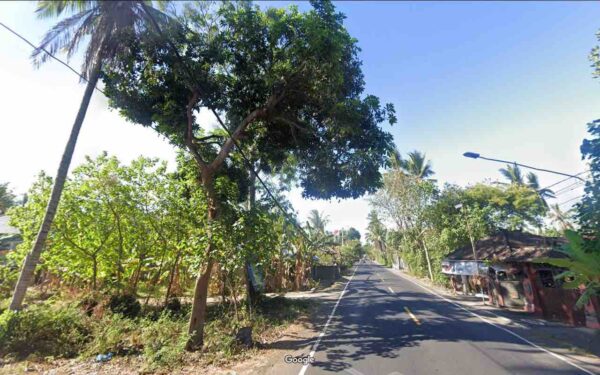
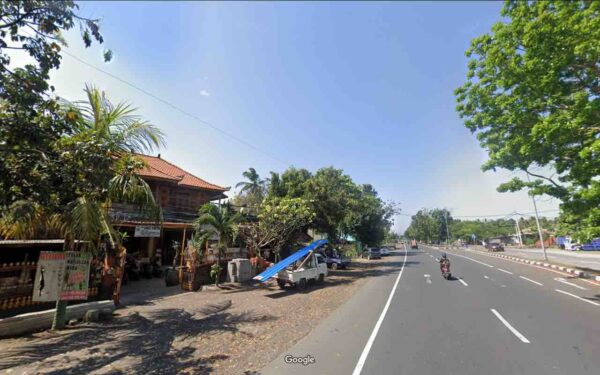
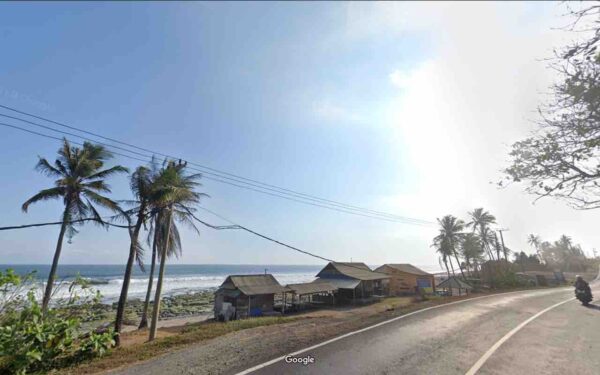
Take stock of what you have seen so far. You have crossed vast deserts, and thousands of miles of ice. You have passed thru tropical rain forests, and crossed remote mountain passes over 16,000 feet into thin air. You have passed countless active volcanoes and been places where the ground trembled beneath your feet every day. You have been in fear of drug wars, falling into crevasses in glaciers, or simply dying of thirst and exposure. You went over 3,000 miles without seeing a human habitation, much less a restaurant (or even a food stand). You have endured temperatures of over 100 degrees (f) and 100 below zero…. You have been reduced to eating pounded palm bark. For cripes sake, a little traffic and the possibility of being executed if the authorities find your prescription medicine are nothing! And you still have no idea what is waiting for you tomorrow.
Live for today, and enjoy Bali.
Before you know it, you will be taking the short ferry ride to Java.
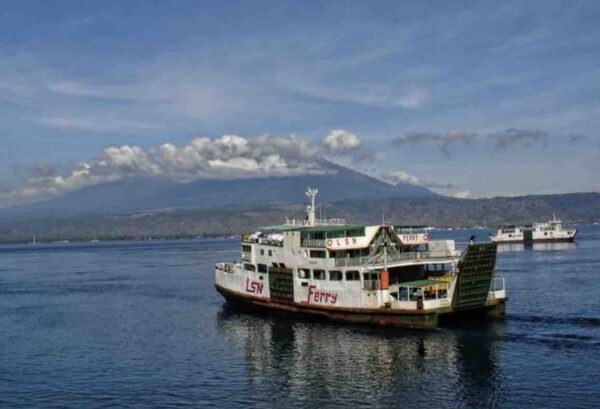

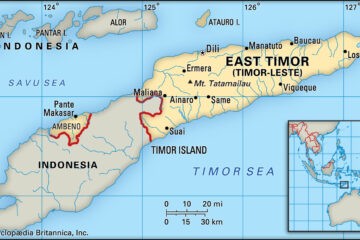
Thanks for doing these, I love the food pictures!